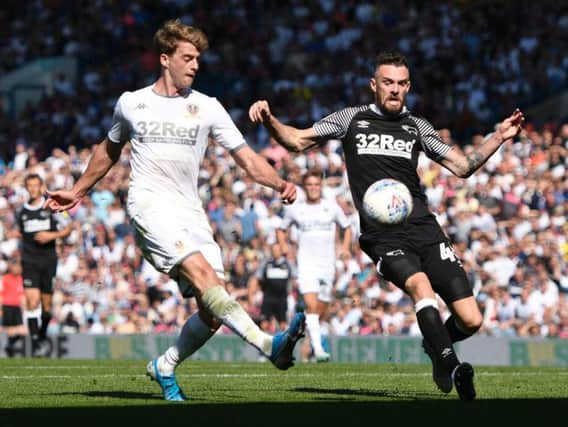Marcelo Bielsa reveals awareness of Leeds United striker debate and explains why he is yet to partner Patrick Bamford and Eddie Nketiah


The Leeds United coach turned his post match press conference on Saturday afternoon into a discussion over his team selection dilemmas, providing an insight into his awareness of the debate that is currently taking place outside the club.
A section of the fanbase have been calling for the introduction of Arsenal loanee Eddie Nketiah and Helder Costa to the starting line-up.
Advertisement
Hide AdAdvertisement
Hide AdAlthough neither were able to change the course of the game against Derby, which ended 1-1 thanks to Leeds' wastefulness in front of goal and a stoppage time equaliser for the Rams, they have both made a significant impact off the bench in previous outings.
Nketiah's goalscoring exploits in his cameo appearances have led to calls for him to either partner or replace Patrick Bamford up front for Leeds.
Bielsa was asked if he might consider changing personnel or tactics, but based much of his answer on an assumption that Nketiah was at the heart of the question.
First, he dealt with the style of play he has instilled in his Whites.
"The game consists in attack and defence," he said.
Advertisement
Hide AdAdvertisement
Hide Ad"If when you attack you create 10 chances more than the opponent, you can not be sad for the style of the team."
He then moved on to personnel.
"I think that your question is linked with the presence of Nketiah and Bamford together, because maybe we can be more efficient with those two players in the team, two goalscorers are in better condition to take advantage of 10 chances," said the Argentine, who suggested that the presence of two central midfielders playing behind Bamford was better suited to creating attacking football than another striker and one midfielder.
On Saturday, Jamie Shackleton partnered Mateusz Klich in the middle, ahead of defensive midfielder Kalvin Phillips, who is central to Leeds' solidity in their own half.
It is not the first time Bielsa has suggested that removing one of the midfielders could be detrimental to his system and the amount of chances it leads to.
Advertisement
Hide AdAdvertisement
Hide Ad"But we should see which player we take out from the team and what is going to be the result if we take out one player behind the attackers," continued Bielsa.
"My answer is, if we play with two goalscorers, maybe we take Forshaw, Klich or Shackleton out, I think that one centre forward without two midfielders behind him is going to worsen the building of the attack.
"So if you have two centre forwards in a team that doesn't create a lot of chances, you cannot take advantage of the resource that you have.
"This is my way of thinking but I'm not sure that it is like that.
Advertisement
Hide AdAdvertisement
Hide Ad"When I put Nketiah on the pitch, I was thinking of taking out Klich and that Eddie and Bamford play together, Bamford behind Eddie. But to take this decision I have to be convinced."
Bielsa went on to admit that, at least for the sake of post match analysis, the discussion was a necessary one.
"I have started to know some players, in the case of Nketiah for example, I need to know how I combine both of them.
"[Against Barnsley] The opponent, they create 10 chances, we create 15 and we won 2-0 and today the opponent created one chances and we drew the match.
Advertisement
Hide AdAdvertisement
Hide Ad"If you see the difference in chances, 10 and 15, is a higher percentage than one to 10, so if we want to analyse, we cannot avoid this discussion.
"Probably what I am saying now is going to be commented as an excessive answer, but if we don't analyse, if we don't talk about this, we just have to say it was one draw and the analysis is finished.
"That is the reason I sometimes ask the journalist, if what I saw is different to what most of you have seen on the pitch."